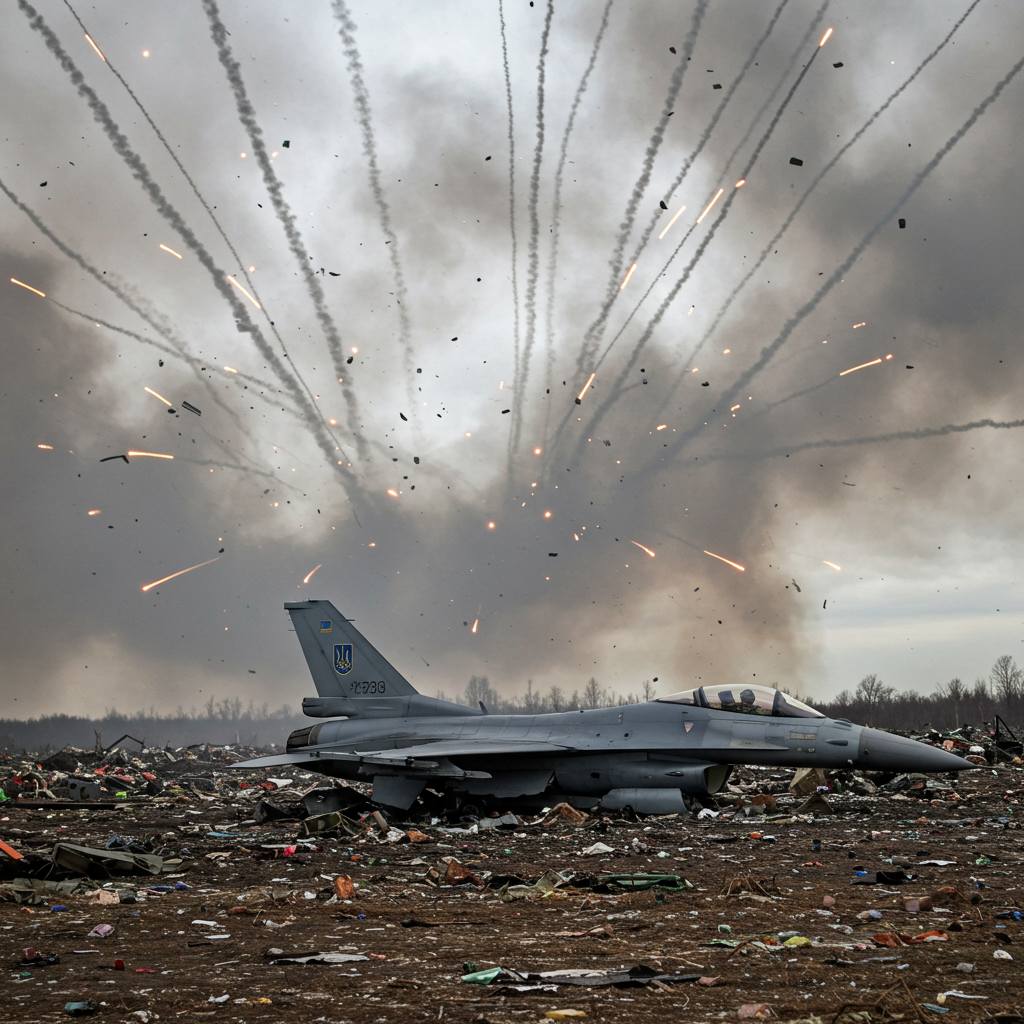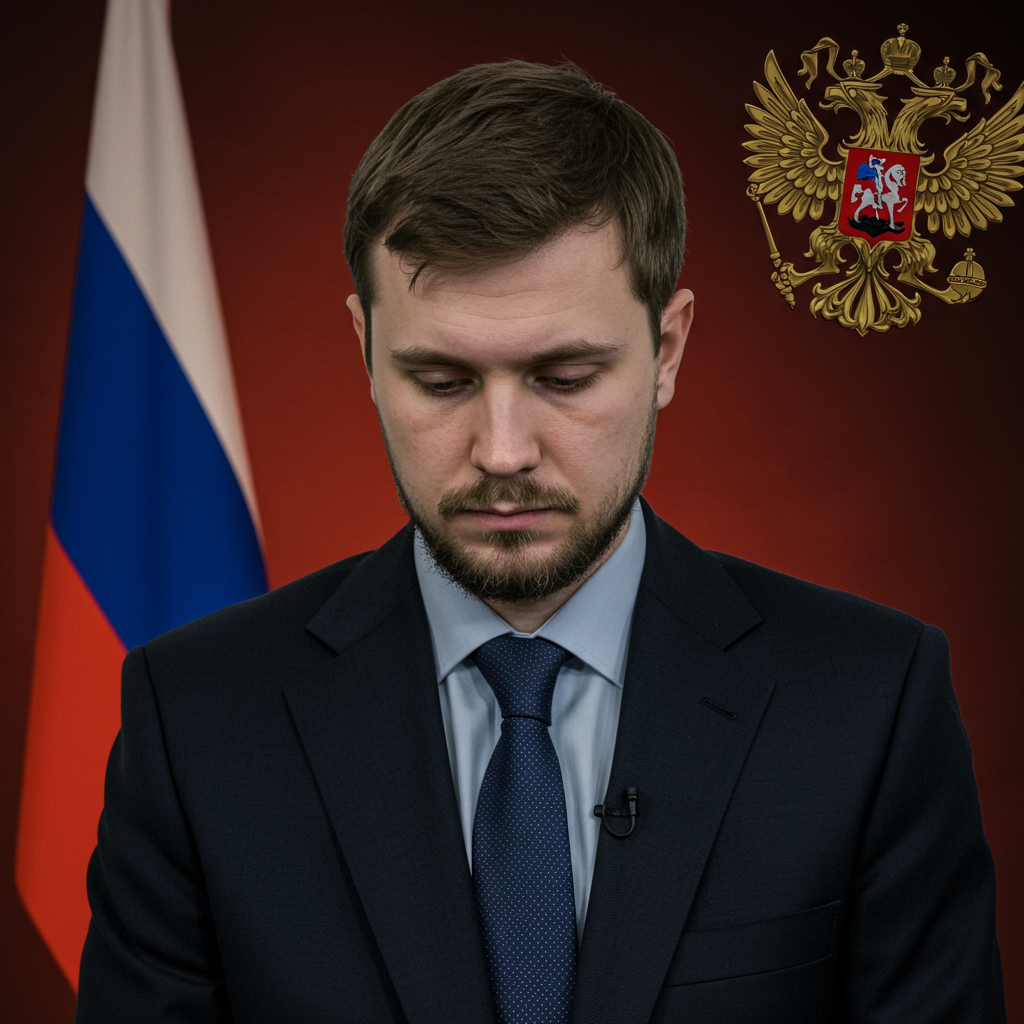ukraine recently endured one of the most extensive aerial assaults launched by Russia since the full-scale invasion began. During this unprecedented barrage involving hundreds of drones and missiles, Ukraine suffered a significant loss: a highly skilled Ukraine F-16 pilot was killed and his advanced fighter jet crashed. This massive Russian attack underscores the relentless pressure on ukraine’s air defenses and the critical need for ongoing international military support. The incident highlights the dangers faced by Ukrainian aviators defending their nation’s skies against overwhelming force.
The Unprecedented Scale of Russia’s Aerial Onslaught
Overnight and into Sunday, Russia unleashed a vast number of airborne weapons across multiple Ukrainian regions. Reports indicate the assault involved 537 projectiles in total, including Shahed drones, cruise missiles, ballistic missiles, and glide bombs. Specific counts cited include 477 drones and 60 missiles, making it one of the largest single attacks of the conflict by volume. Some sources detailed the arsenal further, listing 477 drones/decoys, four Kinzhal hypersonic missiles, seven short-range ballistic missiles, 41 Kh-101 cruise missiles, five Kalibr cruise missiles, and three anti-aircraft guided missiles. This immense scale is designed to overwhelm Ukraine’s air defense systems.
The attacks targeted at least six different locations across the country, causing widespread impact. Regions affected included Kyiv, Odesa, Kharkiv, Dnipro, Mykolaiv, Zaporizhia, and Lviv. Ukrainian officials reported civilian infrastructure was hit, contradicting Russia’s claims of targeting only military and oil facilities. Poland, a neighboring NATO member, even scrambled its aircraft and elevated air defense readiness due to the perceived threat proximity.
Despite the intensity, Ukraine’s air defenses intercepted a substantial portion of the incoming threats. Ukrainian authorities reported downing 211 drones and 38 missiles during the overnight period. Other tallies indicated intercepts of 436 drones and 38 missiles, or specifically 211 drones, one short-range ballistic missile, four Kalibr cruise missiles, and 33 Kh-101 missiles. While these figures demonstrate significant defense capability, the sheer volume means some weapons inevitably reached their targets, with tragic consequences.
A Hero’s Sacrifice: The Loss of an F-16 and Pilot
Amidst the intense defensive battle, Ukraine tragically lost a highly trained pilot and his F-16 fighter jet. The airman was identified as 1st Class Lt. Col. Maksym Ustymenko. Ukrainian officials stated that Lt. Col. Ustymenko demonstrated immense bravery and skill. Before his jet was damaged, he successfully intercepted and destroyed seven enemy air targets.
According to the Ukrainian air force, the F-16 sustained damage while engaging an eighth target. Despite the critical situation, Lt. Col. Ustymenko reportedly attempted to steer the crippled aircraft away from populated areas on the ground. Tragically, he did not have sufficient time to eject from the jet and was killed in the crash. While one report suggested the pilot successfully ejected, official Ukrainian sources confirmed his death, emphasizing his final actions saved lives on the ground.
President Volodymyr Zelensky praised Lt. Col. Ustymenko and other Ukrainian aviators for their heroic defense of the country’s skies. He ordered a full investigation into the circumstances surrounding this vital loss.
The Critical Role and Risks of F-16s
The death of Lt. Col. Ustymenko marks a significant blow for Ukraine. He is the third Ukrainian F-16 pilot confirmed killed since the country began operating the jets last summer. The loss of his aircraft is reported as the fourth F-16 jet Ukraine has lost during this period. These figures underscore the dangerous missions pilots undertake in these advanced aircraft.
F-16 fighter jets are considered Ukraine’s most advanced aerial assets. They represent a strategic leap in capability against Russia’s air supremacy. However, integrating them effectively takes time; training Ukrainian pilots to fly these sophisticated aircraft is highly specialized and takes many months. The small number of trained pilots makes each individual loss particularly impactful. Using these cutting-edge fighters for missions like intercepting slow-moving drones, especially at night, carries inherent risks, including the potential for collision or vulnerability to advanced Russian surface-to-air missile systems like the S-400.
Ukraine has been utilizing its limited number of U.S.-made F-16s for interception missions since receiving the first units in August 2024. The sacrifice of pilots like Maksym Ustymenko, Pavlo Ivanov (lost in April 2024), and Oleksiy Mes (lost in late August 2024) highlights the high stakes involved in deploying these invaluable assets.
Ukraine’s Urgent Plea for Enhanced Air Defense
The relentless and escalating nature of Russian aerial attacks has intensified Ukraine’s appeals to Western allies for more robust air defense systems. President Zelensky has repeatedly stressed the critical need to strengthen Ukraine’s protection from ballistic missiles, cruise missiles, and drones. He stated that Russia will continue such massive strikes as long as it possesses the capability.
A key focus of Ukraine’s requests is the American-made Patriot air defense system. Widely regarded as among the most effective systems available, Patriots are crucial for intercepting advanced threats, including hypersonic and ballistic missiles that other systems struggle to counter. Ukraine is known to possess a small number of these vital batteries, but their exact locations and operational status are closely guarded secrets.
President Zelensky explicitly mentioned Ukraine’s readiness to purchase “American systems” to bolster its defenses. However, acquiring and maintaining enough Patriot systems and their costly interceptor missiles remains a challenge. The ongoing uncertainty surrounding future US aid has raised concerns about Ukraine’s ability to keep its existing Patriot batteries supplied with ammunition, further complicating the defense strategy.
Targeting Civilian Life Amidst Military Claims
While Russia’s Ministry of Defense claimed its massive strike targeted Ukraine’s “military-industrial complex facilities and oil refineries,” Ukrainian officials and on-the-ground reports paint a different picture. Andriy Yermak, President Zelensky’s chief of staff, stated that Moscow hit “energy facilities, infrastructure, and residential areas.”
The human cost of these attacks is significant. In the city of Smila, located in the central Cherkasy region, at least 11 people were injured, including two children. Local officials reported extensive damage to civilian infrastructure, including three multi-story residential buildings, private homes, vehicles, four educational institutions, and even a psychiatric hospital. These reports underline the devastating impact of the strikes on civilian life, regardless of Russia’s stated military objectives.
Broader Context of the Conflict
The massive air assault and the tragic loss of a pilot occur within a complex and evolving conflict landscape.
Ukraine’s Landmine Policy Shift
In a separate but related development, President Zelensky signed a decree initiating Ukraine’s withdrawal from the Ottawa Treaty, an international agreement banning anti-personnel landmines. This move, long signaled by Kyiv, requires approval from Ukraine’s parliament to become official. Ukraine’s Foreign Ministry described it as a “difficult but necessary political decision” driven by the realities of war.
Ukrainian lawmakers argued that Russia, a non-signatory to the convention, uses landmines extensively against Ukrainian military personnel and civilians. They contend that Ukraine cannot remain bound by restrictions its adversary ignores. The United Nations has stated that Ukraine is currently the most heavily mined country in the world, a direct result of the conflict. While Human Rights Watch reported Ukraine’s use of antipersonnel mines in 2023, the decision to withdraw underscores the government’s view that parity in available defensive measures is necessary given Russia’s actions. Several neighboring countries bordering Russia, including Finland, Poland, Latvia, Estonia, and Lithuania, have also taken steps towards leaving the treaty. Rights groups continue to raise concerns about the long-term danger mines pose to civilians.
Signs of Escalation, Not Peace
Adding to the somber context, recent events suggest a continued focus on military action rather than de-escalation. The scale of the recent air attack came shortly after Russian President Putin made statements indicating a potential scale-back in military spending and a readiness for peace talks. However, minimal progress was reported in recent direct negotiations held in Istanbul, where Ukrainian delegates found Russia’s demands “unacceptable.” While a significant prisoner swap occurred (reportedly 1,000 individuals exchanged by each side), it provided little indication of broader movement towards a ceasefire.
Furthermore, reports suggest Russia is potentially massing forces for a large-scale summer offensive, particularly in eastern Ukraine, with some assessments even suggesting ambitions towards the outskirts of Kyiv. The recent appointment of Colonel General Andrey Mordvichev, known for leading the devastating 2022 assault on Mariupol, as Commander of the Russian Ground Forces is interpreted by some as a signal of Russia prioritizing a major offensive over peace negotiations.
International reactions remain varied. French President Macron suggested European nations were coordinating with the US on additional sanctions if Russia refuses an unconditional ceasefire. Meanwhile, former US President Donald Trump has expressed a desire for direct talks with Putin. The complex geopolitical maneuvering continues alongside the fierce fighting on the ground and in the air.
Challenges Beyond the Battlefield
Beyond the immediate military struggle, Ukraine faces other critical challenges. An investigation by the Financial Times revealed that Ukraine has lost hundreds of millions of dollars paid in advance to foreign arms intermediaries for undelivered military equipment over the past three years. This highlights significant procurement issues impacting Ukraine’s ability to arm its forces effectively. Simultaneously, both sides continue to focus on technological advancements, including developing directed energy weapons to counter drones and grappling with the environmental impact of materials like fiber optic cables used in drone operations.
Frequently Asked Questions
What happened to the Ukraine F-16 pilot during the recent Russian attack?
Ukrainian 1st Class Lt. Col. Maksym Ustymenko was tragically killed while flying an F-16 fighter jet during a massive Russian aerial assault. He successfully shot down seven enemy targets before his jet was damaged. Despite attempting to guide the aircraft away from a populated area, he did not have time to eject and died when the plane crashed.
How large was the recent Russian air attack on Ukraine?
Ukrainian officials described the attack as one of Russia’s largest aerial assaults of the war, involving over 500 projectiles. This included hundreds of drones (like Shaheds), various types of cruise and ballistic missiles, and glide bombs. The sheer volume was intended to overwhelm Ukraine’s air defenses across multiple targeted regions, including Kyiv, Lviv, and areas like Smila in Cherkasy.
Why is Ukraine moving to withdraw from the Ottawa Treaty on landmines?
Ukraine’s decision to withdraw from the international treaty banning anti-personnel landmines is based on the reality of the ongoing conflict. Officials argue that since Russia, which is not a signatory, uses mines extensively against Ukrainian forces and civilians, Ukraine cannot remain bound by the treaty’s restrictions. The government stated this difficult move is necessary to prioritize citizen security and state defense in the face of Russia’s actions.
Conclusion
The recent massive Russian air attack, resulting in civilian casualties and the tragic loss of a dedicated Ukraine F-16 pilot and his aircraft, serves as a stark reminder of the brutal reality of the conflict. It underscores the scale of the threat Ukraine faces and the critical need for robust air defenses. The sacrifice of pilots like Lt. Col. Maksym Ustymenko highlights the human cost of defending national sovereignty. As Ukraine grapples with intense military pressure, complex policy decisions like withdrawing from the landmine treaty, and challenges in military procurement, sustained and increased international support for its defense capabilities remains absolutely paramount to countering Russia’s ongoing aggression and protecting Ukrainian lives.



